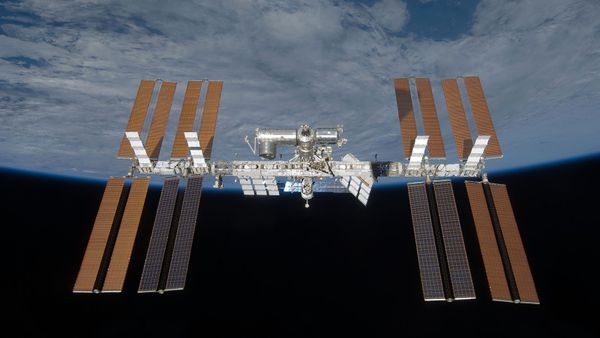
Want to see International Space Station orbiting Earth? Then put that telescope away. The space station is visible to the bare eye — if you know where and when to look.
Like the moon, the International Space Station (ISS) is visible from Earth because it reflects the light of the sun. In the case of the moon, this reflection is sometimes bright enough to see it from Earth during the day. However, the space station is only visible at two distinct times during a 24-hour cycle: dawn and dusk.
Advertisement
For a dawn or dusk space station sighting to occur, conditions have to be just right. It must be dark where you are and the space station must be traveling overhead — 40 degrees or more above the horizon — as it continues its trajectory around the globe. Most of the time, these circumstances only line up every few weeks.
And that's where NASA's Spot the Station website comes in. You just type in what city you live in, and the site offers up-to-date information on the ISS and its trajectory, including alerts that can let you know exactly when to watch the night sky for a space station spotting.
It also helps to know what to watch for. Most of us have seen an airplane moving across the night sky with flashing lights. The space station looks like that, except without the flashing lights, so it's a little tougher to spot. It may seem like a dot in the night sky, but the space station is actually the size of a six-bedroom house. The cumulative volume of its many modules makes it large enough to cover a football field.
The space station also moves at a much faster pace than a plane, about 17,500 miles (28,000 kilometers) per hour, while a typical airplane clocks in at about 600 miles (965 kilometers) per hour, though their relative distances from the surface don't make for exact speed comparisons. Look for a bright star-like spot moving across the sky without changing direction and — voila! — that's the International Space Station.
If you sign up for an alert on NASA's Spot the Station site, you'll generally receive a notification about 12 hours before the space station will pass overhead. The International Space Station is home to six astronauts and science labs from the United States, Russia, Japan and other countries.
Advertisement
